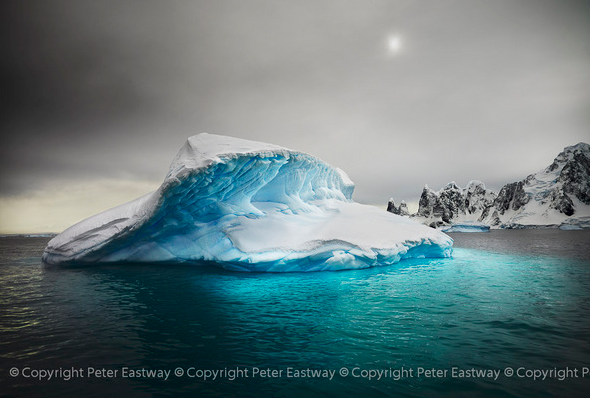
Like many pro shooters, Peter Eastway's path to a photographic career was circuitous. He first got into photography because he loved “surfing and taking photographs of friends surfing”. Lack of a camera led Eastway to a job at the local Woolworths, where he worked for 75 cents an hour until he saved up enough money for a “Ricoh compact camera in a water housing”. It cost $140 and my Mum and Dad helped out. It took some great photos and I was lucky enough to win a school photo competition with a photo of a friend surfing. That in turn gave me a prize to visit Germany to take photographs and so I was bitten with the photography bug.”
Today Eastway is renowned for his inspiring landscapes however he insists he loves all forms of photography from portraiture and architecture to sport and wildlife”. Still Eastway admits that shooting landscapes offers some unique challenges: Traditionally, landscapes are full of detail from the foreground to infinity, so you need a high quality sensor and high quality printing, all the way through the image making process. So, the challenge in shooting landscape is to get as near as perfect an exposure as you can in the camera, but knowing you will further interpret and improve the raw file during post-production.”
His top tips for achieving great landscape shots? Wake up early. Or shoot in winter when you don't have to wake up quite so early, but it is cold. Actually, I prefer to shoot in the evening as the light is warmer and more to my taste.
Light is everything for a successful landscape photograph.” Another tip is to “simplify your composition”. Just as important as what you put into the frame is what you leave out,” says Eastway. Finally he says that "If you can, go to
somewhere others haven't been, because this makes the photos more interesting for your audience. If you can't go somewhere exotic, then look for new and different angles of locations that are more common.”
As a member of the SanDisk Extreme Team, Eastway has travelled to some exotic locations in his time and having reliable equipment is paramount to achieving the shot. Apart from a quality camera and lens, a good memory card
is essential. It's funny how you don't really give your memory cards a second thought, because they are always there and always working,” says Eastway. Some of my photography is with medium format equipment, which writes very
large files. I get around 200 photos on a 16GB card, so you want a card that writes quickly, but more importantly, that is reliable.” According to Eastway, having an Extreme card can assist the photographer in getting the
shots they want.
I've taken my SanDisk cards to some very extreme locations, from the colds of Antarctica, the humidity of the tropics, and the dry heat of the Australian desert. It’s good to feel confident they will work no matter what I dish out. In fact,
the best compliment I can give SanDisk cards is that I don’t have to think about them at all!” Although Eastway says he is not an expert on the tech behind fast memory cards, he says it's easy to see their benefits. “If you’re shooting a
lot of images rapidly, whether sport, nature or just the changing light of a landscape, you don't want your camera to stop because its image buffer is full. The quicker that buffer can be written to your memory card, the more photos you can take, so a fast card is very useful.
“In terms of ‘Extreme’, my understanding of the SanDisk cards is they have software on board which shares the storage load around, so the card lasts long and helps prevent data loss. I’ve also been shown the cards have a degree of weatherproofing that helps them work better in extreme conditions...”
To see more of Peter’s work visit petereastway.com
